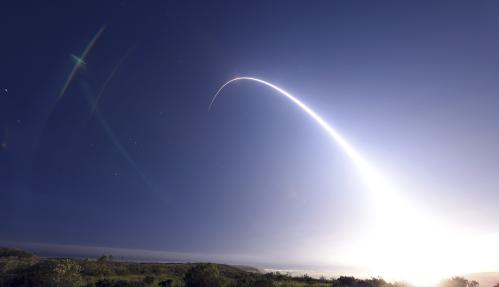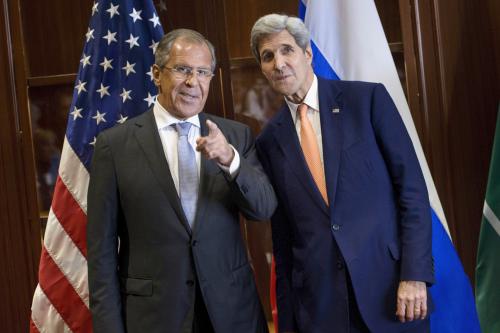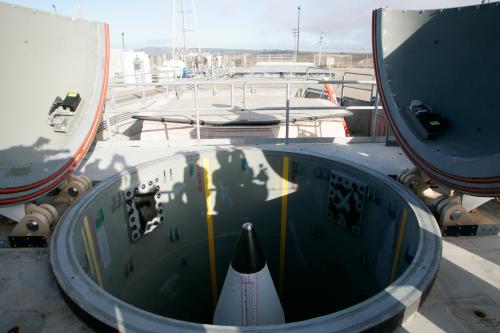 To date, negotiated nuclear arms control and reduction agreements have been an exercise conducted almost solely between the United States and the Soviet Union, and, following the latter’s collapse in 1991, the United States and Russia. That was logical, given the size of the nuclear superpowers’ arsenals compared to those of other nuclear weapons states.
To date, negotiated nuclear arms control and reduction agreements have been an exercise conducted almost solely between the United States and the Soviet Union, and, following the latter’s collapse in 1991, the United States and Russia. That was logical, given the size of the nuclear superpowers’ arsenals compared to those of other nuclear weapons states.
However, U.S.-Russia bilateral nuclear arms control discussions are currently at a stalemate. Differences in approach emerged after the conclusion of the 2010 New Strategic Arms Reduction Treaty (New START). Washington sought further reductions in nuclear weapons, while Moscow focused on related issues, such as missile defense and advanced conventional strike systems. Russia’s seizure of Crimea and intervention in eastern Ukraine in 2014 brought the overall political relationship to a post-Cold War low, and counter-charges of violations of the 1987 Intermediate-Range Nuclear Forces Treaty are a further complicating factor.
In earlier negotiations, Moscow advocated for inclusion of British and French strategic nuclear forces, or tried to extract compensating concessions for them, but Washington resisted. Then, in 2013, Russia began to insist that the next round of nuclear arms reductions be multilateral. The United States continues to prefer the option of another bilateral round. Whether Moscow will stick to its demand remains to be seen. Washington may find that, if it wishes to pursue further U.S.-Russia nuclear reductions, it must respond in some way to Russia’s demand. This paper puts forward possible concrete measures to advance multilateral arms control, with the assumption that Russia will insist that at least some third-country nuclear weapons states begin to engage in the nuclear arms control process.

Due to the size and stability of their arsenals, Britain, France and China are the most logical candidates for near-term inclusion in arms control efforts. Multilateralization of the global arms control regime might first take place among Britain, France, China, the United States and Russia—the five permanent members of the U.N. Security Council and the five nuclear weapons states recognized by the Non-Proliferation Treaty. Though India, Pakistan, Israel and North Korea also possess, or are believed to possess, nuclear weapons, bringing those states into multilateral arms control arrangements is extremely unlikely in the near future.
Though a multilateral arms control effort is not likely in the near term—even between only Britain, France, China, the United States, and Russia—the five U.N. Security Council permanent members could pursue some preliminary measures to foster stability among all nuclear weapons states. Ultimately, however, the success of efforts to reach concrete multilateral arrangements depends on the willingness of Washington and Moscow to take serious steps to reduce their nuclear arsenals. Absent resumption of serious dialogue between the United States and Russia on significant nuclear arms reductions—including non-strategic nuclear weapons— other nuclear weapons states will feel no pressure and have little incentive to accept limits on their own nuclear forces.
| Country | Status of arsenal | Modernization of nuclear warheads and delivery systems |
|---|---|---|
| Britain | Shrinking | Extending life of its warheads, SLBMs, and SSBNs; on cusp of decision regarding development of new class of SSBN. |
| China | Growing | Replacing its road and rail-mobile ICBMs; developing new class of SSBN. |
| France | Stable | Modernizing its warheads; replacing its SLBMs and nuclear-capable aircraft. |
| India | Growing | Developing new land and sea-based ballistic missiles and new cruise missile; SSBNs entering service. |
| Pakistan | Growing | Developing new land-based ballistic missiles and new cruise missiles; replacing its nuclear-capable aircraft. |
| Russia | Stable under New START limits | Replacing ICBMs, SLBMs, and SSBNs; upgrading Soviet-era bombers and developing new bomber. |
| United States | Stable under New START limits | In early stages of modernization program which calls for extending life of SLBMs and warheads, and developing new SSBN, strategic bomber, ICBM, and ALCM. |
If the United States and Russia are able to make further cuts to their arsenals, and also initiate efforts to reach multilateral arrangements, those efforts will likely have to begin with small, manageable steps:
- Negotiating a legally-binding treaty stipulating numerical limits on all five countries’ arsenals would raise difficult questions. Washington and Moscow are not prepared to accept numerical parity with Britain, France and China, and it is very difficult to see the latter three countries accepting unequal limits in a treaty. Instead, as a first step, the United States and Russia should negotiate a new nuclear arms reduction treaty with limits well below those of New START. They should engage Britain, France and China on the possibility of those countries making unilateral political commitments in which they would state their intention not to increase their nuclear arsenals as long as the United States and Russia were implementing the new nuclear arms accord. Such a no-increase commitment could allow for modernization or replacement of older nuclear warheads with new weapons, so long as the net number did not increase.
- Unilateral, no-increase commitments could be accompanied by transparency measures. A detailed data exchange would likely not prove achievable, but it would not be unreasonable to ask that Britain, France and China declare their total warhead numbers. If achieved, a data exchange on warheads might break down the numbers by type of warhead or delivery system.
- An additional confidence-building measure might involve a commitment by the states to refrain from deploying non-strategic nuclear warheads mated to their delivery systems, and instead to store them separately from their delivery systems. Most of the five states are believed to keep their nuclear warheads de-mated from delivery systems, with the exception of strategic warheads on their submarine-launched ballistic missiles and intercontinental ballistic missiles. As another confidence-building measure, the United States and Russia might invite the other three states to join some of their New START-mandated inspections. The three could, in turn, offer demonstrations regarding some of their nuclear systems.
- Finally, the five states could build on the P5 discussions to date with more structured and detailed exchanges on questions related to strategic stability, the interrelationship between strategic ballistic missiles and missile defense, and the impact of advanced conventional strike systems on the nuclear relationships between the United States and Russia, the United States and China, and Russia and China.
The recommended agenda thus includes unilateral no-increase commitments, basic data exchanges, commitments to de-mate and store non-strategic nuclear warheads separately from delivery systems, group inspections or demonstrations of nuclear weapons-related systems, and a multilateral dialogue on strategic stability. Such measures may seem modest to many, including officials of non-nuclear weapons states. But reaching consensus with Britain, France, and China on even this limited agenda would be a major step forward in arms control. In parallel with further negotiated U.S.-Russia arms reductions, such measures would set the stage for more ambitious multilateral proposals in the future.







